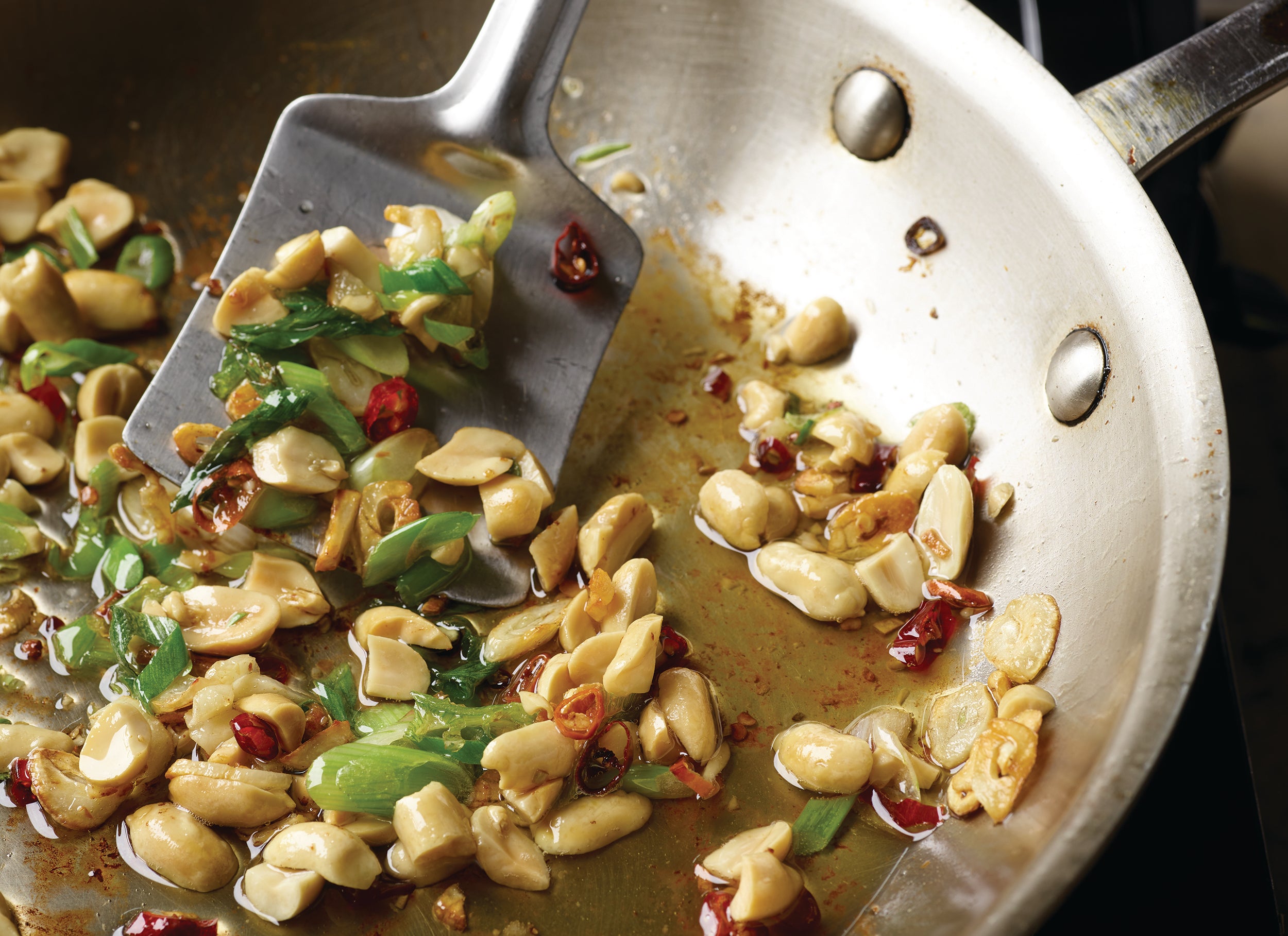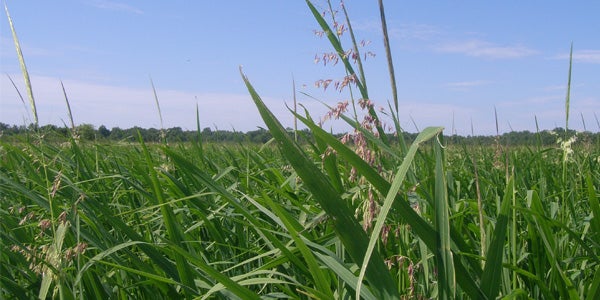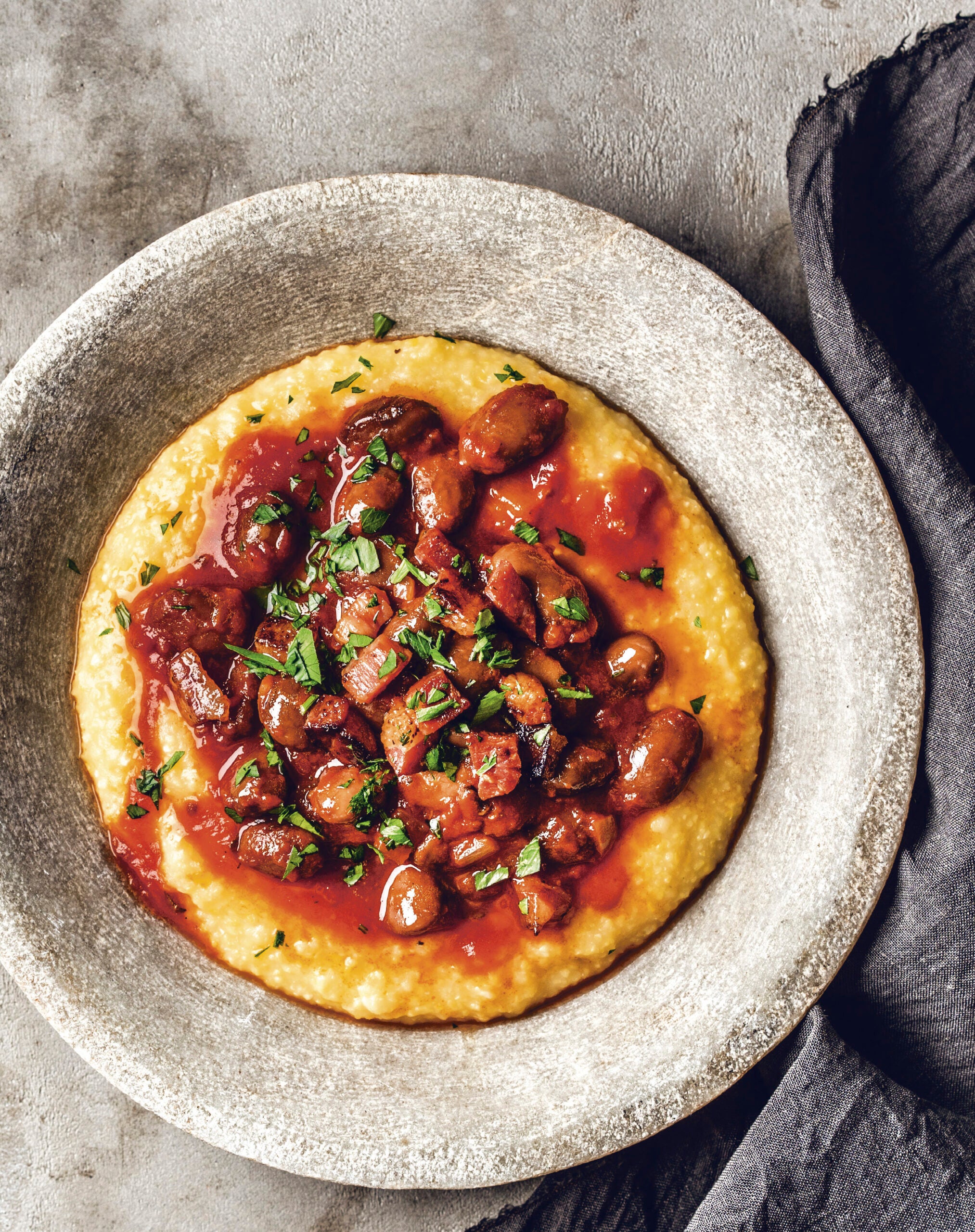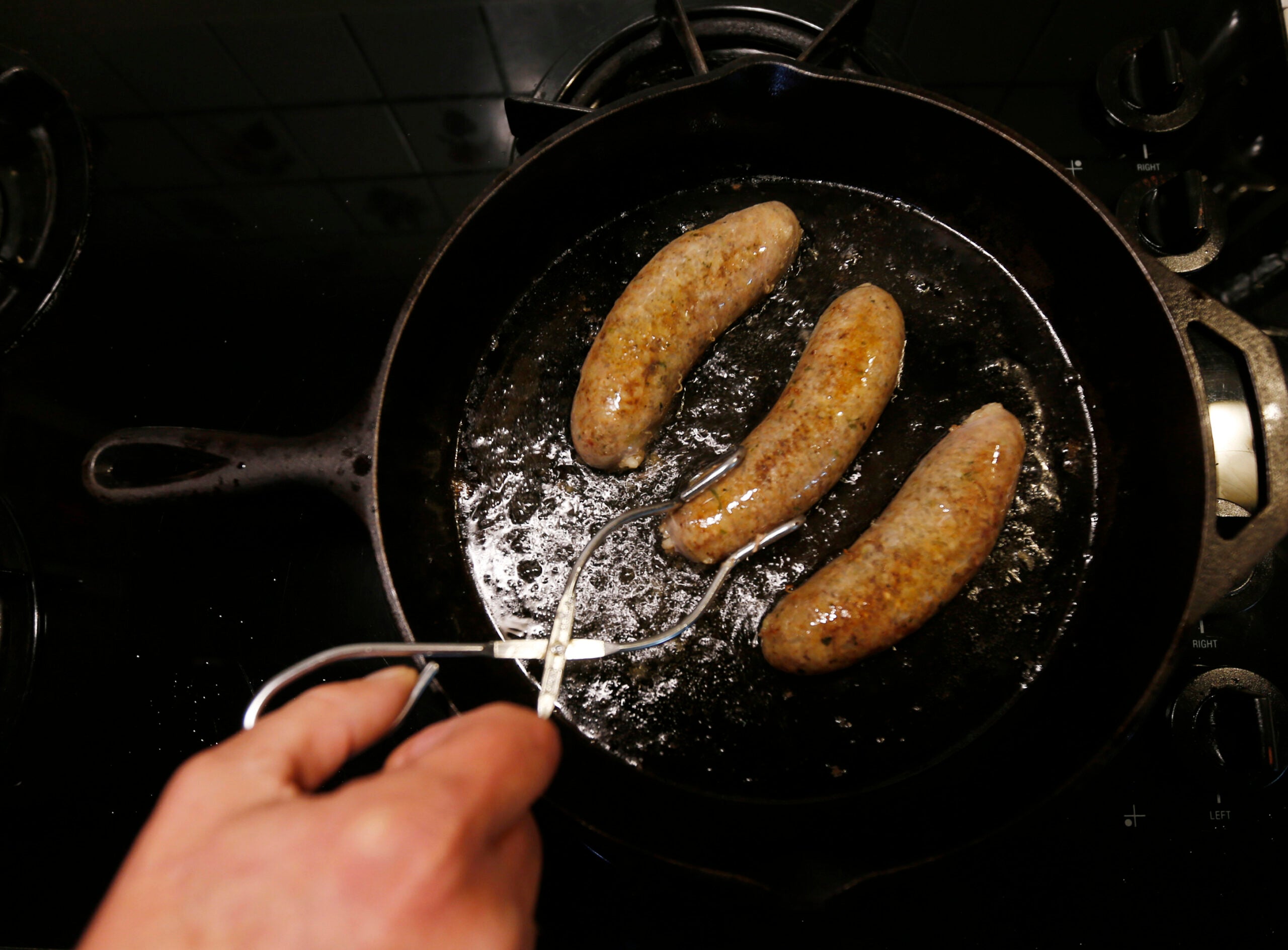Sometimes, a meal that calls for meticulous measuring and oddball ingredients just doesn’t fit the bill. On days like that, Seattle-based chef Susan Volland, says you can still have a delicious, flavor-infused dish without all the fuss.
Take, for instance, a recipe in her new book, “Searing Inspiration: Fast, Adaptable Entrées and Fresh Pan Sauces.” The “It’s-Been-a-Long-Damn-Day-Wine-From-Your-Glass Pan Sauce” calls for wine poured from your own cup to effortlessly create a sauce that complements the dish.
“Why not just throw a skillet on the pan and make some good dinner and maybe (use) some wine from your glass to start it,” said Volland.
Stay informed on the latest news
Sign up for WPR’s email newsletter.

Susan Volland’s recipe for Skirt Steaks with Artichoke Pickled Pepper Relish is featured in her recently-published book, “Searing Inspiration: Fast, Adaptable Entrées and Fresh Pan Sauces.” Photo courtesy of Susan Volland
Each recipe in her book is divided into three steps: prep, sear and sauce.
Volland uses skillets for her meals and is hopeful her recipe book — which was selected by NPR as one of its “Best Books of 2018” — will take the intimidation out of cooking with a hot pan.
“I think it’s really important that people know how to wield a skillet thoughtfully and well,” she said.
Her reassurances come in the form of tips, for example, getting the skillet hot before adding anything to it. She said there might be some concerns about heating empty pans because of warnings related to their coatings. But pans without treatments are perfectly fine to heat empty, she said. The reason for heating the pan ahead of time is to get the oil at the right temperature immediately.
“It also really secures that nonstick property of a pan that isn’t nonstick,” she said. “It gives you that hydroplaning action that means you never need to use a nonstick pan for these recipes.”
Using a skillet in this way allows for better concentration of juices and flavors that are used later as the base for pan sauces, she said.
“We just rehydrate them, we liquefy them and we turn them into this wonderful sauce to go with whatever you cooked,” she said.
The process of creating a sauce begins with the base flavors, as well as the sticky brown bits left over from the protein. Added to the pan is garlic and shallots and some kind of flavorful liquid such as red or white wine, carrot juice, stock or even vinegar. Those ingredients are then cooked down to a couple tablespoons and embellished with fresh seasonal vegetables or condiments.
“They still can only take two or three minutes,” she said. “It doesn’t take long and then you have a sauce.”
She uses this method in her recipe for “Chicken with Buttery Fresh Tomato and Basil Sauce,” by first searing, or browning, boneless, skinless chicken breasts, removing them from the pan and then creating a sauce out of items people typically have stored in their pantries.
She mixes together garlic, red chile flakes and diced tomatoes, white wine, butter and fresh chopped basil.
That sauce works well with fish or tofu, she said. Each sauce recipe in her book lists protein options that pair well with it.
“The whole point of it isn’t necessarily following on particularly locked in recipe, but it’s understanding the techniques and then being able to make them work for you,” she said.
Wisconsin Public Radio, © Copyright 2025, Board of Regents of the University of Wisconsin System and Wisconsin Educational Communications Board.




